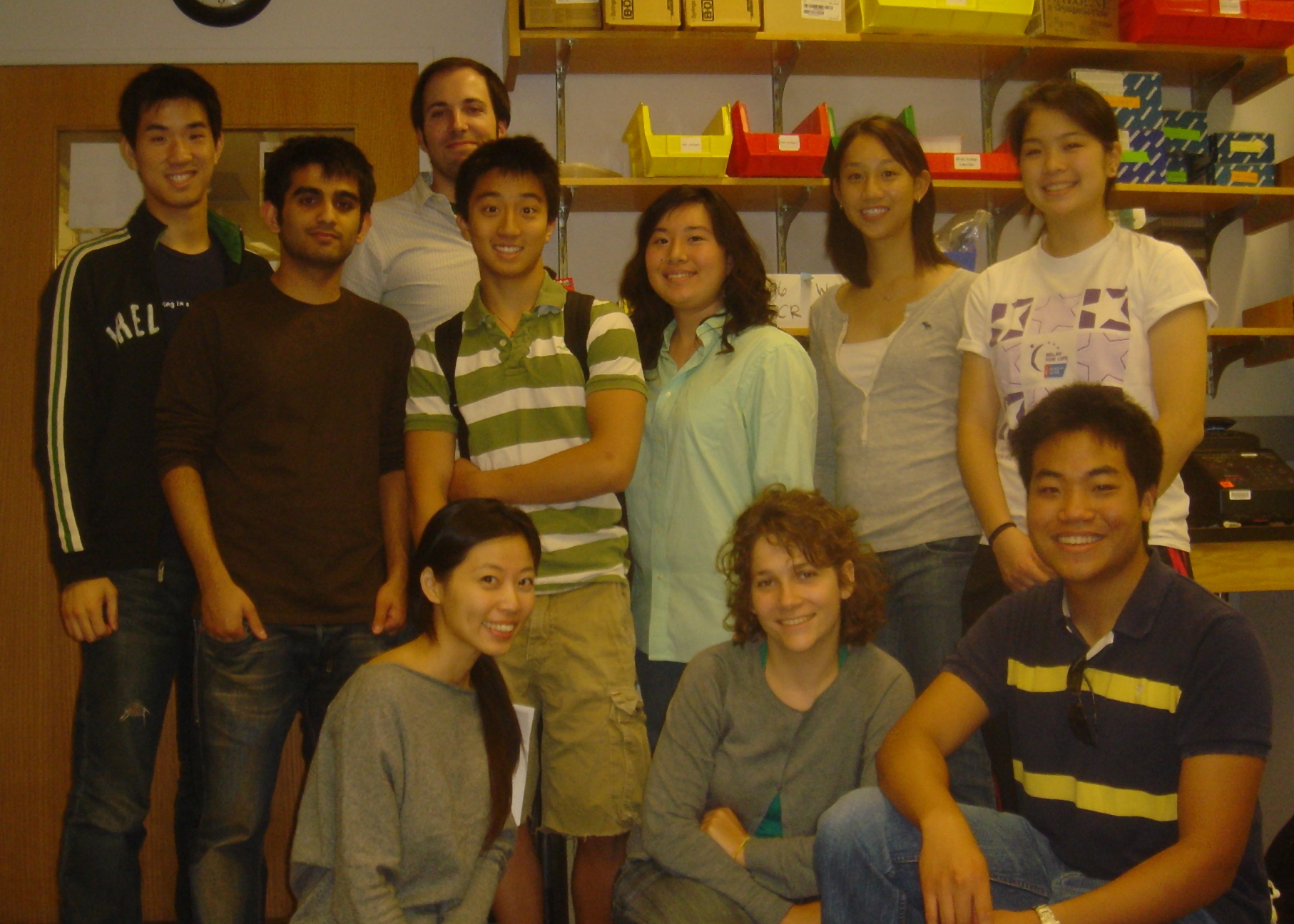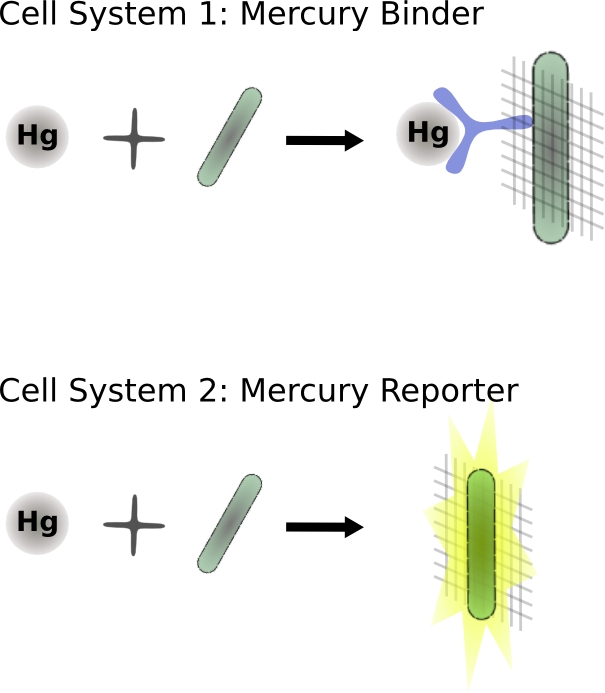 Information
Information
Mercury contamination of drinking water is a significant problem in both developed and developing countries. Techniques to filter it out are both costly and intensive. Thus, the MIT iGEM 2007 team is engineering a biological mechanism to cost-effectively sense and remove Mercury ions from contaminated water through a two cell system. One cell will use the Mer promoter to sense the presence of Mercury ions, then activate the GFP fused downstream. The other uses a cell surface display mechanism to exhibit a Mercury capturing peptide, extracting the Mercury from the water. Both cells also display polystyrene binding peptides, and will thus be attached to a polystyrene filter. This setup would be easy to use, cheap to manufacture, and economical to distribute. It could be used from very small scales to even an entire village's drinking water supply.
BioBrick Parts
- [http://partsregistry.org/Part:BBa_I728005 OmpC Surface Display]
- [http://partsregistry.org/Part:BBa_I728004 CPX Surface Display]
- [http://partsregistry.org/Part:BBa_I728500 CPX display of a polystyrene binding peptide]
- [http://partsregistry.org/Part:BBa_I728200 Simple System of Transcriptional Regulator, RBS, and CPX Surface Display Mechanism]
- [http://partsregistry.org/Part:BBa_I728201 Complex System of Promoter, RBS, CPX, and terminator]
Resources
- [http://openwetware.org/wiki/IGEM:MIT/2007/Notebook Team Notebook]
- Brainstorming:
- [http://openwetware.org/wiki/IGEM:MIT/2007/Heavy_Metals Heavy Metals]
- [http://openwetware.org/wiki/IGEM:MIT/2007/Signalers Signalers]
- [http://openwetware.org/wiki/IGEM:MIT/2007/Links_for_Bioremediation_Project Links for Bioremediation Project]
- [http://openwetware.org/wiki/IGEM:MIT/2007/Ideas Ideas]
- [http://openwetware.org/wiki/IGEM:MIT/2007/UpdatedIdeas Updated Ideas]
- [http://openwetware.org/wiki/IGEM:MIT/2007/Ideas3 Final Discussion]
- [http://del.icio.us/MITiGEM Background reading]
|
 Graphics
Graphics
 Top Row: Forrest Liau, Aditya Kohli, Brian Cook, Alex Lue, Semmie Kim, Bernice Huang, Jess Ho. Bottom Row: Debbie Liu, Laure-Anne Ventouras, Toan Tran-Phu
|
 People
People
Students
- [http://openwetware.org/wiki/User:Jessho Jessica Ho]
- [http://openwetware.org/wiki/User:Bernice Bernice Huang]
- [http://openwetware.org/wiki/User:Awlue Alexander Lue]
- [http://openwetware.org/wiki/User:Skim Semmie Kim]
- [http://openwetware.org/wiki/User:Akohli Aditya Kohli]
- [http://openwetware.org/wiki/User:Toan Toan Tran-Phu]
Email us: team [AT] igem.mit.edu
Advisors
- [http://openwetware.org/wiki/User:Anton1 Anton Aboukhalil]
- [http://openwetware.org/wiki/User:Barbero Robbie Barbero]
- [http://openwetware.org/wiki/User:Carr Peter Carr]
- [http://openwetware.org/wiki/User:Cookb Brian Cook]
- [http://openwetware.org/wiki/Drew_Endy Drew Endy]
- [http://openwetware.org/wiki/User:Ghoshd Rana Ghosh]
- [http://openwetware.org/wiki/User:Hyungdo Hyung-Do Kim]
- [http://openwetware.org/wiki/Tom_Knight Tom Knight]
- [http://openwetware.org/wiki/User:Krauland Eric Krauland]
- [http://openwetware.org/wiki/Forrest_Liau Forrest Liau]
- [http://openwetware.org/wiki/Debbie_Liu Debbie Liu]
- [http://openwetware.org/wiki/User:Ryrolitt Romie Littrell]
- [http://openwetware.org/wiki/User:Venkataramanan Venkataramanan Soundararajan]
- [http://openwetware.org/wiki/User:Lventouras Laure-Anne Ventouras]
Email grads: grads [AT] igem.mit.edu
Email all: igem [AT] igem.mit.edu
|
 Graphics
Graphics
